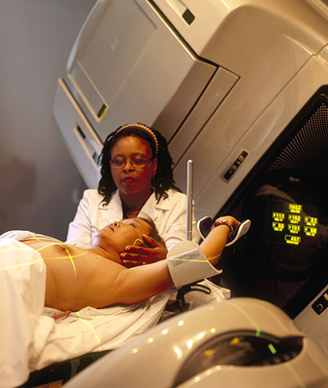Shorter RT Course in Breast Cancer Yields Less Toxicity, Better QoL
Hypofractionated radiation therapy results in less toxicity and provides a better quality of life compared with conventional whole-breast irradiation, according to two recent studies.
Hypofractionated radiation therapy results in less toxicity and provides better quality of life

Hypofractionated radiotherapy results in less toxicity and provides better quality of life compared with conventionally fractionated radiotherapy, according to a pair of studies published in JAMA Oncology.
As of 2013, hypofractionated radiotherapy is recommended by the American Society for Radiation Oncology (ASTRO) for women age 50 or older diagnosed with early, invasive breast cancer who are undergoing breast-conservation therapy. The recommendation is based on two large studies from Canada and the United Kingdom that both showed 10-year rates of local control and overall survival to be similar with either hypofractionated or conventionally
fractionated radiotherapy. Still, a 2014 study showed that hypofractionated radiotherapy has seen slow adoption.
With the results of the newer studies, “the mounting evidence supporting hypofractionation can no longer be ignored,” wrote Shyam K. Tanguturi, MD, of the Harvard Radiation Oncology Program in Boston, and Jennifer R. Bellon, MD, of the Dana-Farber Cancer Institute in Boston, in an editorial accompanying the two publications. “With comparable tumor control, lower costs, and reduced morbidity, hypofractionation should be strongly considered for the majority of patients with early-stage disease,” wrote the experts.
Still, the editorial authors noted that there is still limited data on toxic effects and tumor control with hypofractionation among patients with ductal carcinoma in situ and in patients receiving regional nodal irradiation. These two groups were not addressed in the two current studies.
The first study, a randomized trial from the MD Anderson Cancer Center in Houston, found that women who received hypofractionated radiotherapy had significantly lower rates of skin reactions, pain, and fatigue directly following treatment compared with women who had conventional radiotherapy. At 6 months, the women had lower rates of both physician-reported fatigue (P = .01), patient-reported “lack of energy” (P < .001), and “trouble meeting family needs” (P = .01). The study enrolled 287 women age 40 or older who had stage 0–II breast cancer.
Physician-evaluated toxicity of grade 2 or higher was also significantly lower among women who received hypofractionation (47% vs 78%; P < .001) including fatigue, pruritus, breast pain, and dermatitis. Acute toxic effects of grade 3 or higher were also lower (0% vs 5%; P = .01).
There were no assessed adverse events or quality-of-life factors that were worse among the hypofractionated radiotherapy group compared to the conventionally fractionated radiotherapy group, wrote Benjamin D. Smith, MD, of the department of radiation at the University of Texas MD Anderson Cancer Center in Houston, and colleagues.
The study’s primary endpoint, patient-reported cosmesis at 3-year follow-up, is still maturing.
The second study reported real-world outcomes of a multi-institution radiation-specific Michigan-based registry of 2,309 patients with stage I–III breast cancer from the Michigan Radiation Oncology Quality Consortium. All women in the study received adjuvant radiotherapy between 2011 and 2014 and had prospective physician-reported toxicity evaluations.
This study, led by Reshma Jagsi, MD, DPhil, of the department of radiation oncology at the University of Michigan Medical School in Ann Arbor, Michigan, found that hypofractionation was associated with less fatigue, acute pain, swelling, and skin reactions, and was more convenient for patients compared to conventional radiotherapy.
Grade 2 or higher breast pain was lower among those receiving hypofractionation (5.9% vs 20%; P = .003), as was dermatitis (27.4% vs 62.6%; P < .001), skin induration (13.7% vs 21.1%; P = .01), and chest pain (6.8% vs 18.5%; P < .001).
These results suggests that the “selection of radiation fractionation schedule may affect incidence of acute, treatment-related toxic effects of adjuvant whole-breast radiotherapy, which may compromise patients’ quality of life during this challenging period,” wrote Jagsi and colleagues.